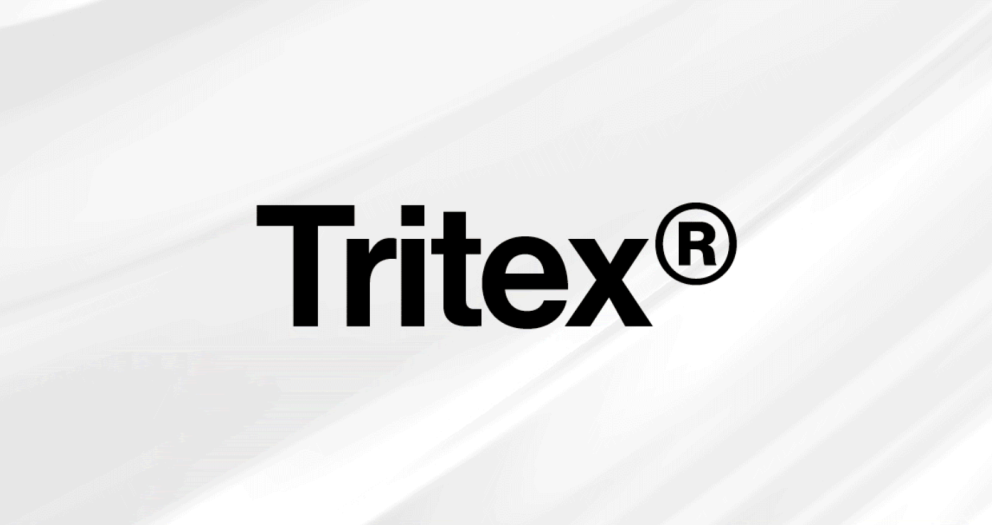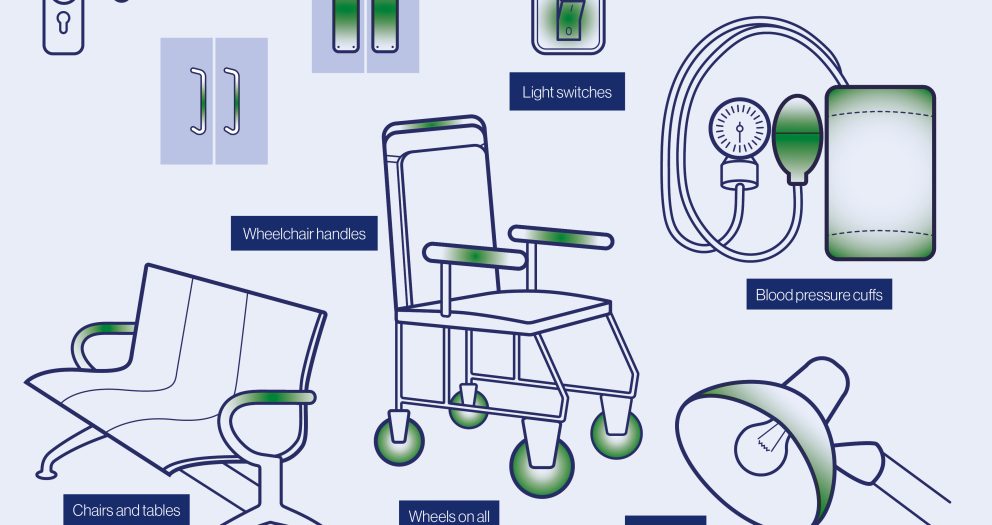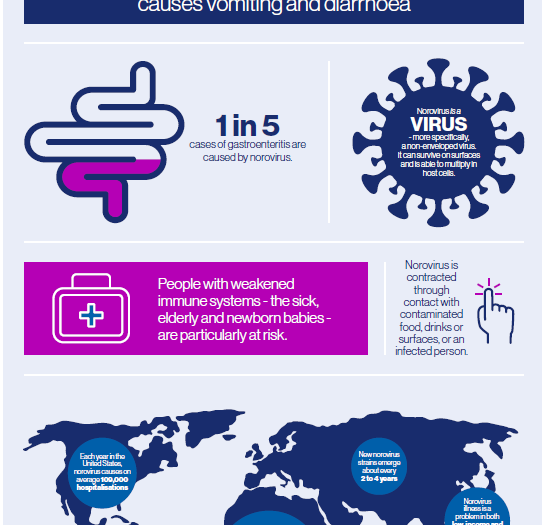The effect of COVID-19 on the food and beverage industry has been profound. So we’ve assembled this guidance for people involved in the food manufacturing, processing and service sectors.
WHAT ARE THE SYMPTOMS OF COVID-19
COVID-19 is a respiratory illness. It affects people in different ways and symptoms vary. But the most common signs include the onset of any of the following:
- a new, continuous cough
- a high temperature
- a loss of, or change in, your normal sense of taste or smell (anosmia)
We all need to prevent the spread of this virus by following some simple rules. If you develop symptoms, or test positive for COVID-19, you need to self-isolate at home. If your symptoms get worse, seek medical help from your healthcare provider.
Take a look at our healthcare guide to COVID-19 and familiarise yourself with the basics. Here you’ll find more information and advice on topics such as symptoms, prevention and treatment. There also are useful links to other trusted resources and websites.
For more specific guidance on the food industry, read on.
WHAT IS THE RISK ASSOCIATED WITH FOOD?
COVID-19 is very unlikely to be passed on by food or food packaging.
Although there is no evidence to suggest foodborne transmission, people involved in food manufacturing and processing should continue to follow food safety rules and best practice.
The main way the virus is spread is through human-to-human contact. It’s carried by respiratory droplets when an infected person coughs or sneezes.
It can also be picked up from contaminated surfaces or objects, such as food or food packaging. But the risk is low, as long as food hygiene and food safety processes are in place. The virus is also killed by cooking and the disinfection of food preparation surfaces.
You’re very unlikely to catch COVID-19 from food, but based on the available information these are the three risk areas that have been identified:
- Contaminated food – evidence suggests that the risk is very low. It is highly unlikely coronavirus can be spread through food. However, as with other infections, good hygiene practices should be followed in food preparation.
- Infected food handlers – the main mechanism of transmission is human-to-human. All food workers should ensure the necessary personal and environmental controls are in place to prevent transmission through food, preparation areas and packaging.
- Contaminated food contact materials – the risk from food contact materials is very low. Good hygiene practices should already be in place during the manufacturing stages to reduce the risk of contaminating any food contact materials and articles.
HOW TO REDUCE THE RISK OF COVID-19
The risk can be kept low in the food and beverage industry, provided that good hygiene practices are maintained. Staff should wash their hands frequently with soap and water for at least 20 seconds. This should be done routinely, including:
- before and after handling food
- before handling clean cutlery, dishes, glasses, or other items to be used by the customer
- after handling dirty or used items, such as collecting used dishes from customer tables
- after handling money
- after touching high-contact surfaces, such as door handles
- when moving between different areas of the workplace
- after being in a public place
- after blowing your nose, coughing or sneezing. Coughs and sneezes should be caught in a tissue or the crook of your elbow
Food businesses in the UK should continue to follow the Food Standard Agency’s (FSA) guidance on personal hygiene and hygienic practices in food preparation, and Hazard Analysis and Critical Control Point (HACCP) processes. You can also find guidance on risk assessment from The Health and Safety Executive (HSE).
COVID-19 has been extremely disruptive to the food and drink industry. Where you’ve made changes to routine ways of working, it’s important to review these against your HACCP procedures and consider if there’s any impact to food safety.
WHERE TO FIND MORE INFORMATION?
The FSA has provided guidance for food businesses on adapting and reopening due to COVID-19. There are a variety of resources for restaurants and takeaways, which reflect food safety and wider public safety measures to prevent transmission of the virus.
There’s a page on adapting food manufacturing operations during COVID-19. This includes information on staff training, personal protective equipment (PPE) and social distancing.
Here’s a reopening checklist from the FSA to help support food businesses to reopen safely after a period of inaction. On the other side of the coin, here’s guidance on undertaking a rapid shut-down in response to COVID-19.
As a general rule of thumb, you should stress the importance of more frequent hand washing and maintaining good hygiene practices in food preparation and handling areas.
PERSONAL PROTECTIVE EQUIPMENT
Within the food and beverage industry, Personal Protective Equipment (PPE) can be used to protect workers, and where appropriate to prevent the contamination of food during production. COVID-19 shouldn’t change these requirements.
Ensure that PPE continues to be used, as detailed in your Food Safety Management System (FSMS), and in line with your Health & Safety at Work policies.
In general, you should:
- stress the importance of more frequent handwashing and maintaining good hygiene practices in food preparation and handling areas.
- Employees should wash their hands for at least 20 seconds, especially after being in a public place, blowing their nose, coughing, or sneezing.
- Ensure that objects and surfaces that are touched regularly are frequently cleaned, and disinfected using your regular cleaning products.
Gloves
Some businesses have a glove-use policy, but the wearing of gloves by people handling food isn’t always a legal requirement. Food handlers can maintain good personal hygiene by frequently washing their hands.
Gloves can be used as an aide to good food hygiene practice but should not be considered a substitute for a thorough regime of effective hand washing. COVID-19 can contaminate disposable gloves in the same way it gets onto workers’ hands.
A few pointers:
- If gloves are used, they should be changed as often as you would wash hands
- You must wash your hands when changing or removing gloves
- Gloves must be changed after carrying out non-food related activities, such as opening and closing doors by hand, handling money and emptying bins.
- Food workers should avoid touching their mouth and eyes when wearing gloves.
Face masks/coverings
Face coverings help to limit the spread of infection. In many countries, it’s compulsory to wear a covering in areas that are open to the public or where you’re likely to come within close contact of a member of the public. This includes restaurants, cafes and the hospitality sector.
You can find guidance for businesses on wearing face coverings from the Gov.uk website, as well as detailed guidance for specific workplace settings.
It’s important to remember that inappropriate use and handling of face coverings could present a risk to food safety and hygiene, as well as the health and safety of staff. Follow this guidance on how to wear a face covering, which details the hygiene requirements for safe and effective use, maintenance and disposal.
Put procedures in place to enable staff to follow this guidance.
HOW DO WE MAINTAIN SOCIAL DISTANCING?
Employers and managers must take steps to support their staff to follow government guidance to keep the workplace safe during the pandemic.
You should conduct a COVID-19 workplace risk assessment. This will enable you to manage the potential risks posed by the virus. A reminder that the Health and Safety Executive has published guidance to help employers conduct a COVID-19 risk assessment.
Measures you can take include:
Maintaining social distancing within the workplace.
Consider reducing staffing density by staggering shift start and end times, reducing the number of workers per shift and creating a break between shifts to minimise overlap and to enable effective cleaning of the working areas.
It will not always be possible to keep a distance of 2 metres. In these circumstances we must all do everything we reasonably can to reduce risk. Working safely during COVID-19 in a factory, plant or warehouse contains guidance on how to implement social distancing.
Avoid face-to-face working conditions, where possible.
If production lines do not permit two metres distancing, face-to-face working should be avoided. Also consider whether further mitigation measures such as redesigning the task or adding physical barriers can be considered.
Take a cohort approach.
Wherever possible, employees should be organised into groups built around natural work teams. These cohorts work together, take their breaks together, change together, and travel together if relevant.
If one person then becomes infected this increases the ability for only members of that particular cohort to be excluded from the workplace and facilitates the smoother running of the facility.
Safety throughout the facility, including entry points.
Consider staggering shift starting times to minimise crowding. Hand washing facilities or hand sanitiser should be available at all entry points and throughout the workplace. Limit unnecessary visits to the site. Hand and respiratory hygiene should be promoted and staff encouraged to wear the necessary PPE and face coverings.
Take action to reduce the risk in communal areas.
COVID-19 transmission may be a concern in communal areas. These include canteens, rest areas, toilets and locker rooms. To combat the threat, ensure handwashing facilities or hand sanitiser are available at the entrance to all communal areas. Increase the frequency of cleaning and to what you can to make social distancing more manageable.
WHAT DO I TELL MY CUSTOMERS?
It’s important to emphasise that you’re very unlikely to catch COVID-19 from food or food packaging. The virus can be passed on by contaminated surfaces or objects (known as ‘fomites’), but consumers can take steps to mitigate the risk.
Here’s a short summary:
Food hygiene when shopping
The risk of COVID-19 cross-contamination to food or food packaging is low. Food businesses have to comply with strict food hygiene and food safety regulations.
Staff are required to maintain a high degree of personal cleanliness and wear suitable, clean clothing. However, this does not necessarily require staff to wear gloves when serving or handling food. When buying loose foods such as fruit and vegetables, try and only touch what you are going to buy.
Social distancing when shopping
Maintain a safe distance between yourself and others, and only buy what you need. Try to avoid crowded spaces and avoid areas congested with other shoppers. Shops and supermarkets may take steps to avoid crowding, such as limited access and implementing queue management systems.
Food hygiene at home
If you’ve been shopping, there shouldn’t be any need to sanitise the outer packaging of food. However, you should still follow good hygiene by washing your hands after handling any outer packaging. Gently rinse fresh fruits and vegetables under cold, running tap water, as you would do normally.
Takeaways and food delivery
Where possible, place your order by telephone, an app or online. If you’re collecting your food in person from a takeaway or restaurant, make sure to follow social distancing rules. This may include staggered collection times and queue management system. Similar rules apply to deliveries and remember to wash your hands before eating.
Nutritional advice for consumers
Always follow the instructions on the packaging,which includes ‘best before’ and ‘use by’ dates. All the usual rules of food hygiene apply. Make sure that you’re eating a balanced diet and taking care of yourself. Vitamins and minerals won’t prevent or treat COVID-19, but can have an effect on how our immune system works to fight off infections, as well as inflammation and swelling.
You can find more consumer information on food and coronavirus from the Centres for Disease Control and Prevention (CDC). There is also Gov.uk guidance for consumers on COVID-19 and food, which you might find useful.
MAINTAINING HIGH STANDARDS
COVID-19 needs to be managed through a hierarchy or system of control including social distancing, high standards of hand hygiene, increased surface cleaning, fixed teams or partnering. Other measures such as using screens or barriers to separate people from each other can also be used to help manage the risk.
By maintaining high standards of food hygiene and food safety, we can reduce the risk to customers and our employees.






